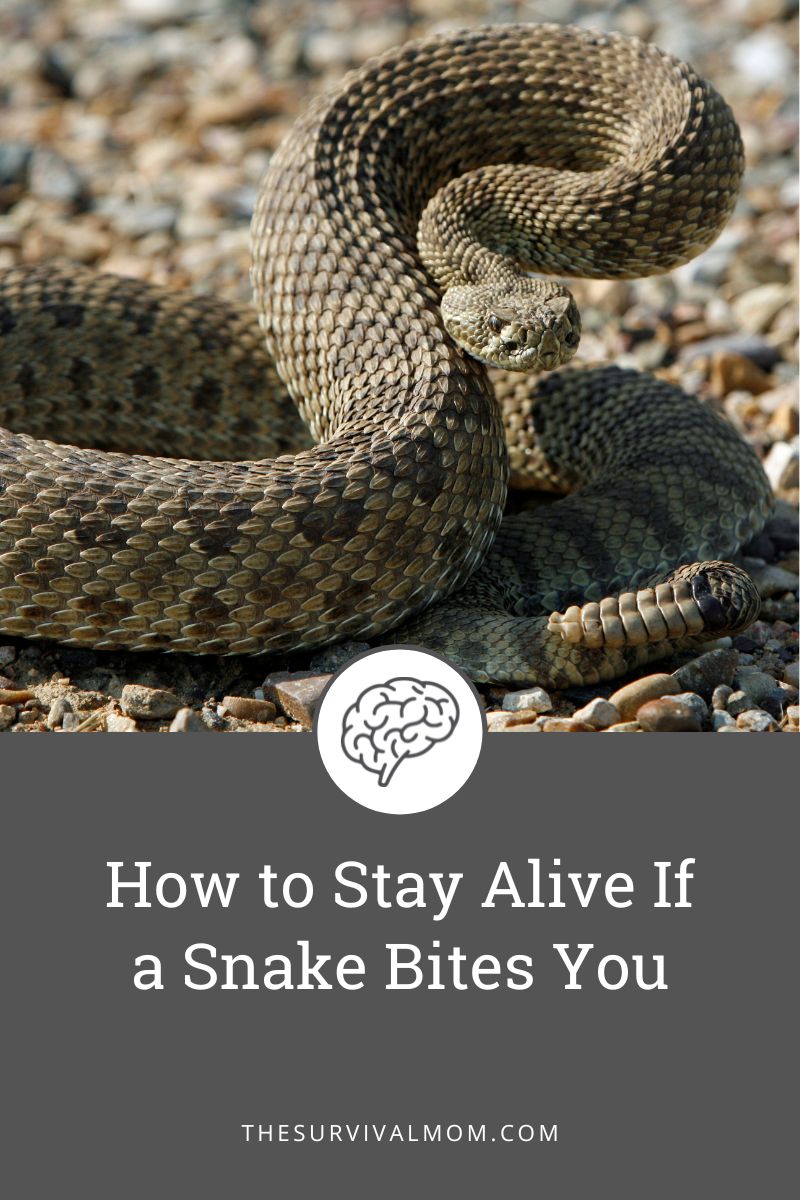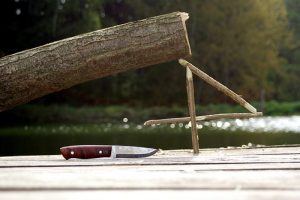Some of the links in this post may contain affiliate links for your convenience. As an Amazon associate I earn from qualifying purchases.
The allure of the wilderness brings people venturing outdoors to hike, backpack, camp, hunt, or just enjoy the solitude and beauty of a remote location. Yet in its midst lies an ever-present reality: the potential encounter with venomous snakes. While these creatures are an essential part of our ecosystem, a snake bite can quickly escalate into a life-threatening situation, especially when miles away from civilization.
Snake bites are undeniably alarming, but with the right knowledge and composure, you can increase your chances of survival. Remember that even in the remotest of locations, you are your best advocate for survival. Let’s learn about the critical first aid measures that can make a significant difference in the outcome.
How common are snake bites?
According to the CDC, 7,000 to 8,000 people in the United States are bitten by venomous snakes every year. Thankfully, only about five die. However, if people didn’t try to reach medical attention as promptly as possible, the number could be higher. Despite the low death rate, being bitten by a snake can result in serious long-term injuries for 10-44 percent.
Contrast that with sub-Saharan Africa where the number of people who die from a snake bite is more than 20,000. Availability of adequate health care and a lack quality antivenoms are part of the problem. This one reason to know how to handle an emergency if it happens abroad.
Regardless of your location when it happens, it’s important to take preventive measures and to know first aid for snake bites.
How to Identify Venomous Snakes
This downloadable publication about snakes from North Carolina State Extension will help you learn about venomous and harmless varieties.
Snakes will bite whatever body part is easiest to strike.
Snake Bite Preventative Measures
Snakes will bite whatever body part is easiest to strike. That’s usually a foot, ankle, hand, or arm. To protect yourself, wear hiking boots and a pair of thick socks that extend above the ankle. This protects those vulnerable spots as will a pair of loose, long pants.
Keep in mind that snakes are more active in warmer months. They also like to cower under rocks and in dark holes. I shouldn’t have to tell you this, but don’t stick your hands in those types of places without looking first. This is something that kids, in particular, like to do, so warn them ahead of time of the dangers.
And, it’s not just hands that are a problem. Poking under rocks and in dark cubby holes with a stick can be equally dangerous if a sleeping snake is awakened. They can move surprisingly fast and if they aren’t in a good mood, who could blame them?
Here are some other tips for preventing snake bites:
- Use common sense and leave snakes alone.
- Watch for signs that warn of rattlesnakes and be alert.
- Use walking sticks to clear areas ahead of you.
- Never chase the snake from the trail.
- Check rocks or stumps before sitting.
- Snakes are cold-blooded and like to bask in sunny areas.
- Sightings increase in spring and fall, with most snake bites happening April-October.
- Snakes are most active at dawn and dusk, and when it’s warm.
What to Do If a Snake Bites You
In spite of these precautions, let’s assume that you are, indeed, one of the unluckiest people on the planet. You’re far from a medical facility and you’ve been bitten by a poisonous snake.
If others are with you and have a cell phone with the Red Cross first aid app, or a similar app, it wouldn’t hurt to look up “Snake Bites”, but otherwise, what do you do?
- First, don’t panic. As the venom enters your blood stream, you can slow down its spread by staying calm with a survival breathing technique and moving as little as possible.
- Walk backwards away from the snake and sit down a safe spot. If you become dizzy or faint, you don’t want to collapse and cause another injury.
- Expect swelling in the bite area, so remove rings, watches, and any tight clothing that could cut off circulation.
- Do not use anything that restricts blood flow. Think a tourniquet, ice, etc. This prevents the venom from being concentrated at the bite site. Also medical consensus is do not use snake bite kits.
- I’m not going to lie to you. The pain is going to be intense, but it’s important to not take any pain medication without a doctor’s advice. It can further impact the body’s clotting ability and increase the risk of internal bleeding.
- Use a pen to draw a circle around the wound and write on the skin the time the bite occurred. This will provide a gauge for tracking the reaction to the venom as well as any possible infection. Every 15-30 minutes repeat this. Mark the outer edge of swelling and the time. Also right down symptoms as they develop.
- Clean the bite wounds with water and soap and then apply a bandage to keep bacteria out. A glob of pine tree sap is a good alternative to a bandage, if that’s all you have on hand.
- Use an Epi Pen if you have anaphylaxis symptoms.
- If you are able, move slowly and steadily toward the closest medical facility, hopefully with the assistance of other people. Your best outcome will result from the most immediate medical attention.
- If you’ve brought along a cell phone, call Poison Control as soon as you have a clear signal, 1-800-222-1222.
I’m not going to lie to you. The pain is going to be intense…
Things NOT to Do
- At no point should you try to suck out the venom with your mouth, unless you really want to experience the effects of a snakebite without the actual bite. More than one person has died from ingesting snake venom in this manner.
- You also shouldn’t waste time looking around for the snake in an attempt to kill it and take it to the medical facility. Just do your best to remember as many details as possible of its pattern of color and size. If you do see the snake nearby, take a quick pic with your cellphone for later identification.
- As mentioned before, don’t take pain relievers as they amplify the blood clotting interference of snake venom.
- No ice. It contributes to tissue damage.
Carry These Snake Bite Supplies
If your wilderness survival gear, doesn’t already have these items, add:
Final Thoughts About Handling Bites from Snakes
While the prospect of a snake bite may instill fear, remember that fear can be combated with understanding and proactive measures. Stay vigilant, educate yourself about local wildlife, and always carry a first aid kit tailored to handle potential snake bites. With this newfound awareness and confidence, you can venture into the wilderness knowing that you possess the tools to handle serpent safety.
What items do you carry in case of snake bites?
Originally published June 13, 2015.
I’m the original Survival Mom and for more than 11 years, I’ve been helping moms worry less and enjoy their homes and families more with my commonsense prepping advice.
















